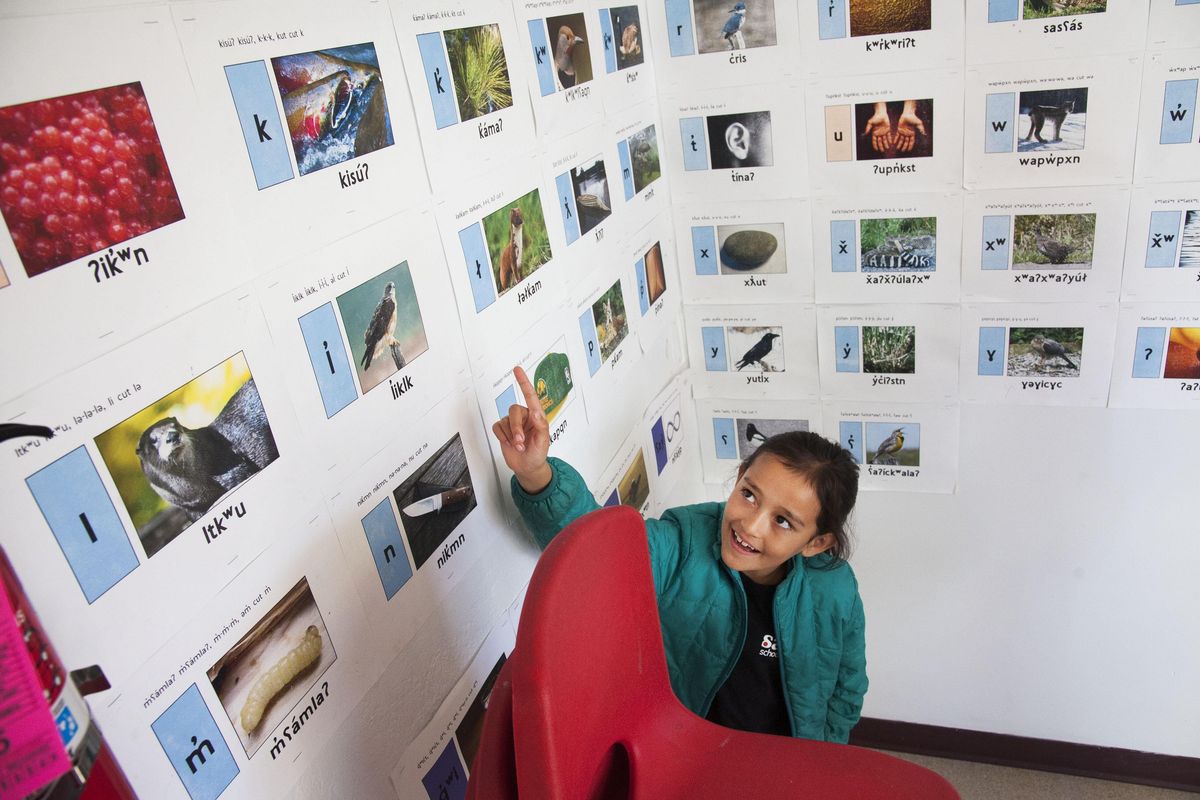Salish School of Spokane hopes to bind families, save a language

A small school in Spokane is fighting to save a dying language.
“The language is spiritual. It is healing,” said co-founder LaRae Wiley, a member of the Arrow Lakes Band of the Colville Confederated Tribes. “If we don’t do this, it’s gone.”
The Salish School of Spokane is an all-day school that teaches all subjects in Salish, an indigenous language. Spokane Salish, a dialect taught at the school, has only four fluent living speakers left, said school co-founder and Principal Chris Parkin. These speakers are tribal elders, who traditionally have been the sole repositories of Native American culture and history.
There were 1,350 Salish speakers nationwide in 2013, according to the U.S. Census, with most speakers in Washington or Montana.
Wiley and her husband, Parkin, a former Spanish teacher, started the school six years ago with four students in the basement of Wiley’s sister’s home. Since then, it has grown through a combination of donations, state money and tuition dollars. This year, the school’s enrollment rose from 35 to 60 students, who are prekindergarten through elementary age, in five classrooms.
The school’s success has created growing pains, however. A fundraising campaign that ends Sunday needs to bring in another $1,400, said Wiley, the executive director. Donations make up about 9 percent of the school’s $1.1 million operating budget.
And the school needs to find additional space. Wiley and Parkin have plans to move the school to a new building next year, if they can raise the money. Starting in May, the school will launch a $20,000 campaign in an effort to do that.
Wiley said the school is the only Native American language immersion school in the continental United States. Like any other school, students learn state-approved subjects and materials, but all lessons are taught in two dialects of Salish.
“Even when they are teaching them how to read and write in English, they are teaching them in Salish,” Parkin said.
The school’s mission goes beyond simply teaching language skills. Wiley and Parkin see it as a healing and connecting process, aimed at students and parents. Any parent who wishes to enroll their child at the school commits to studying Salish for 60 hours every year.
“The whole idea is to bridge that intergenerational gap,” Wiley said. “The parents need to learn so that the kids can go home and they have someone to talk to.”
Sparrow Richards, 8, has seen the benefits of the immersion experience. Sparrow used to dread going to school in Cheney. Children mocked him for his skin color, his hair and his name. At one point, said his mother, Kim Richards, it was so bad he forced her to cut his hair. When Richards found and enrolled Sparrow into the Salish School of Spokane, it was a relief.
“It’s amazing, because I don’t have to worry about him because it’s a safe space,” Richards said.
That safety has long-term benefits, said Danica Parkin, a nurse practitioner and the daughter of Wiley and Parkin whose own 8-year-old daughter attends the Salish School. Cultural connections act as “protective factors,” and language is a major part of culture, she said. Reconnecting with a culture can help heal generational trauma caused by years of discrimination, she said.
Additionally, Danica Parkin sees learning Salish as a way of preserving and protecting a separate cultural identity.
“If we’re all driving in SUVs and eating McDonald’s and speaking English, how different is it?” she said.
Wiley and Chris Parkin have created the entire curriculum, including books, from scratch. All of that material is available online at Interior Salish, www.interiorsalish.com.
“We can’t buy Salish books,” Parkin said. “We have to make Salish books.”
One of the unique challenges facing the school is the fact that any teachers the school wants to hire generally have to learn Salish before they start teaching. Parkin and Wiley look for people interested in learning Salish, and then they work on getting the necessary teaching credentials.
“It’s a lot of work, but it’s very rewarding,” Wiley said. “A lot of our staff have said this school saved their life.”
The school costs between $2,750 and $7,000 per year, depending on financial need. It’s open to anyone, although there is a waiting list for each program.
Most of the students and families are Native American, but not all are, Danica Parkin said.
“I feel like if your language is dying you shouldn’t be nitpicking who is learning it,” she said.